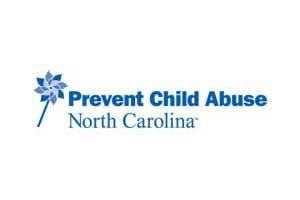We hope that your conversations with your child about body safety will be open and ongoing. Parents should not just have “the talk” with children, but multiple, natural conversations over time so that children know it is safe to talk about these subjects.
Subjects to Discuss
- Talk about “safe” and “unsafe” touching rather than “good” or “bad” touching. This removes guilt from the child, and keeps them from having to make a moral distinction about what is and is not appropriate.
- Use age-appropriate wording. You can discuss body safety without discussing sexuality. Teach young children that no one should touch them in any area that their bathing suit covers, and that they should never touch anyone else in these area or see pictures or movies that show those areas.
- Teach the difference between healthy and unhealthy secrets. An example is that a surprise party is an okay secret to keep, because it will make people happy and will be told at the right time. Secret touching is not okay, or keeping any permanent secrets from parents or caregivers.
- Have your child name five people that they could talk to if someone was touching them in an unsafe way. Children are often afraid to tell their parents out of fear of punishment (or because of a threat made by a perpetrator), so it’s important for your child to know they can seek out other trusted adults to confide in. Instruct your child that they should keep telling until someone helps them.
- Teach children proper names for body parts so that if they disclose inappropriate touching, it will be clear what they are talking about.
- Revisit this safety talk often. Children learn through repetition. How many times do you remind children to look both ways before crossing the street?
Educate yourself. Attend one of our seminars on preventing child sexual abuse, or host your own. Call (252)338-5658 for more information on safety presentations.
Facts & Myths
Myth: Teaching my children about “stranger danger” is the best way to keep them safe from sexual predators.
Fact: In the vast majority of sexual abuse cases, the offender was known (and very often trusted by) the victim’s family. Sexual predators invest incredible amounts of energy into creating a persona of a trustworthy person in order to have access to children. Abductions and abuse by strangers represent a very small percentage of sexual abuse in children.
Myth: I should teach my kids about “good touching” and “bad touching.”
Fact: Using the terms “good” and “bad” requires the children to make a moral decision, which can be very conflicting as even inappropriate touching might not feel “bad” to the child. The use of the term “bad touching” can also imply guilt to the child, and make him feel ashamed to tell about what happened. A better approach is to talk about “safe” and “not safe” touching. You can use the example that no one should touch the child in any area covered by their bathing suit. The conversation shouldn’t only be about touching, however: you should also educate your children about indecent exposure and exposure to pornography. You can use the same bathing suit example: “No one should touch you anywhere your bathing suit covers. No one should ask you to touch them somewhere that their bathing suit covers. No one should show you a part of their or someone else’s bodies that their bathing suit covers.”
It is important to remember that inappropriate touching can happen between children, not just between a child and an adult. Do not be exclusionary in your safety talk: don’t talk only about men or adults, but stress that no one should do these things with them.
Myth: I can’t talk to my young child about sexual abuse because I’m not ready for them to know about sex.
Fact: You can, and should, talk to young children in an age-appropriate manner. You can teach them personal safety without discussing the birds and the bees.
As parents, we often say that “we’ve had the talk” in a way that implies this is a one-time conversation that we can check off of our to-do list. These types of safety conversations need to be ongoing, especially for younger children who need repetition in order to learn. How often do you remind your child to look both ways before they cross the street? This type of safety is just as important.
Myth: I should tell my children to come to me if someone is hurting them.
Fact: While this should be an important part of your safety talk, it should not be the only part. It is important to recognize that your children may not always feel comfortable telling you about things that are bothering them. Also, sexual offenders will frequently threaten children not to tell their parents about the abuse. To ensure greater safety, encourage your children to name five trusted adults they could tell, and instruct them to continue to tell until someone helps them.
This article focused on teaching children personal safety. The largest impact, however, will be for us as adults to have the most powerful tools in protecting them. We encourage you to attend a “Darkness 2 Light: Stewards of Children” presentation to learn the steps to protecting children from sexual abuse.

















